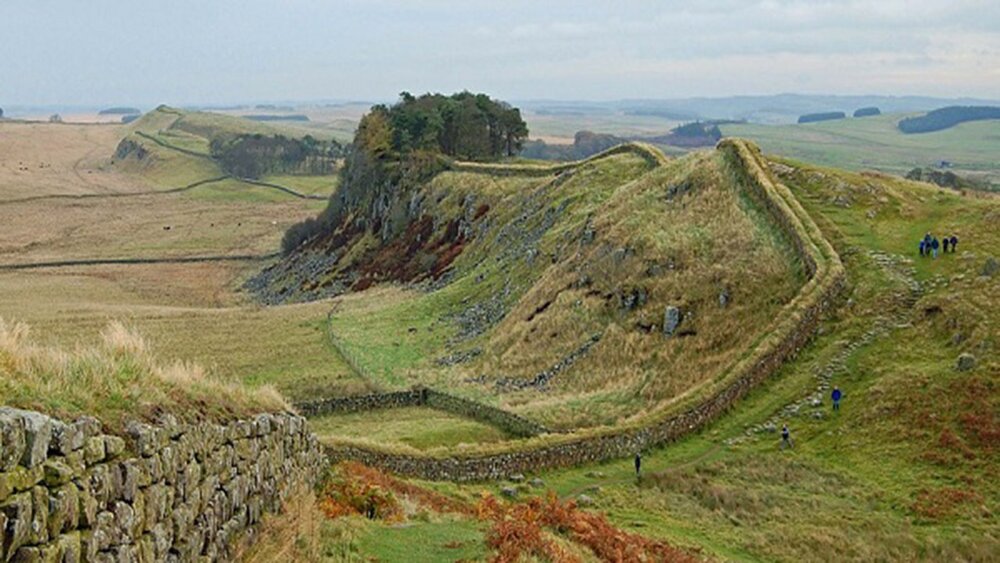Iran to allocate some $240,000 for Great Wall of Gorgan restoration

TEHRAN – Iran will set aside ten billion rials (some $240,000 at the official exchange rate of 42,000 rials per dollar) for the restoration of the Great Wall of Gorgan, Cultural Heritage, Tourism and Handicrafts Minister Ali-Asghar Mounesan said on Sunday.
Situated in the city of Gorgan, the capital of northern Golestan province, the defensive wall is about 200 km in length, and it was built to prevent the invasion of the northern tribes. It is said to be the longest architectural work of ancient Iran, which was built in 90 years.
“We will allocate one billion tomans (ten billion rials) of credit for the restoration of the Great Wall of Gorgan, so that with this credit, the measures for the restoration of this wall, along with aerial imaging and mapping, will be carried out as preliminaries for [the possible] UNESCO registration,” Mounesan said.
The minister made the remarks in a meeting with provincial officials and cultural figures during his visit to the lush green province.
Last December, Mounesan’s deputy for cultural heritage, Mohammad-Hassan Talebian, said: “Gaining a UNESCO tag for the Great Wall of Gorgan -- one of the longest brick barriers of the ancient world -- is not hard as it is comparable to the Great Wall of China in terms of age, function, and size.”
Although there are some issues and obstacles, further efforts to preserve and restore the millennia-old wall could be an acceptable justification for UNESCO to add this structure to the World Heritage list, Talebian explained.
To get to that point, complete and accurate mapping of the remnants of the wall is needed, for which a budget of 20 billion rials ($476,000 at the official rate of 42,000 rials) has been allocated so far official added.
He also noted that if the mapping project comes to an end by the end of the current Iranian year 1399 (March 20, 2021), the inscription of the wall on the World Heritage list would be discussed and possibly approved by the end of the next summer.
Also known as Red Wall, which in some ancient texts is referred to as the Red Snake, this wall is the longest brick ancient barrier between Central Europe and China, longer than Hadrian’s Wall and the Antonine Wall put together and the third-largest wall in the world after the walls of China and Germany.
Most parts of the gigantic monument are still hidden underneath the surface through some segments that have so far been unearthed and even restored to former glory. Archaeological excavations have so far identified ditches, brick kilns, earthen dams, water canals, 38 forts, and watchtowers attached to the wall, and more than 25 castles in the southern margin of the wall as well as several ancient sites from prehistoric, historic, and Islamic eras.
The gigantic barrier is also more than three times the length of the longest late Roman defensive wall built from scratch, the Anastasian Wall west of Constantinople. The combined area of the forts on the Gorgan Wall exceeds that of those on Hadrian’s Wall about threefold.
According to UNESCO, the Gorgan Wall is remarkable not only in terms of its physical scale but even more so in terms of its technical sophistication. To enable construction works, canals had to be dug along the course of the defensive barrier to provide the water needed for brick production. These canals received their water from supplier canals, which bridged the Gorgan River via qanats. One of these, the Sadd-e Garkaz, survives to 700 m in length and 20 m in height but was originally almost one kilometer long.
The Gorgan Wall and its associated ancient military monuments provide a unique testimony to the engineering skills and military organization of the Sassanian Empire. They help to explain its geographic extent, from Mesopotamia to the west of the Indian Subcontinent, and how effective border defense contributed to the Empire’s prosperity in the interior and its longevity. These monuments are, in terms of their scale, historical importance, and sophistication, of global significance.
Golestan is reportedly embracing some 2,500 historical and natural sites, with UNESCO-registered Gonbad-e Qabus – a one-millennium-old brick tower – amongst its most famous.
AFM/
Leave a Comment